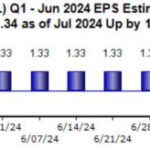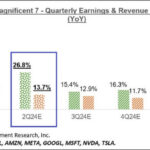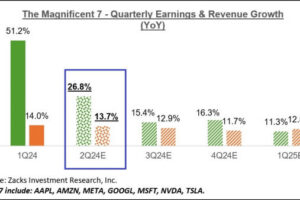
Sexual harassment complaints have increased significantly since the #MeToo movement started in October 2017, even as the total number of workplace complaints to federal regulators have declined.
In the 18 months since the exposés of alleged sexual harassment and assault by film mogul Harvey Weinstein, the U.S. Equal Employment Opportunity Commission reported an increase in sexual harassment complaints.
The EEOC received 7,609 sexual-harassment complaints during the last fiscal year, up 13.6% on the previous year, even though reports of all types of workplace harassment declined, data released earlier this month show. Workers filed 76,418 allegations overall of workplace harassment, a drop of 9.3% on the previous year.
‘If those employees are stepping forward because they’re hopeful that they can trust their employers will address the problem, that’s a good sign.’
Some see the trend as a good sign. EEOC complaints are going up, and so are internal complaints to employers and industry groups, said Cathy Ventrell-Monsees, senior counsel at the commission.
“If those employees are stepping forward because they’re hopeful that they can trust their employers will address the problem, that’s a good sign,” Ventrell-Monsees told MarketWatch.
But even these numbers are tiny compared to the actual number of sexual-harassment cases in companies across America. It’s estimated that only about 15% to 20% of workers who experience sexual harassment report it, said Victoria Lipnic, the EEOC’s acting chairwoman.
Complaints to the EEOC — the federal agency that enforces civil rights laws against workplace discrimination based on factors including race, religion and gender — are a prerequisite to filing most federal workplace discrimination lawsuits.
There’s been a wave of workplace training in the wake of #MeToo on how to prevent sexual harassment, experts say, which has helped people understand what constitutes sexual harassment and empowered them to speak up.
April is also Sexual Assault Awareness Month, a national campaign coordinated by the National Sexual Violence Resource Center. Sharyn Tejani, director of the Time’s Up Legal Defense Fund, said more awareness has led to more reporting.
Don’t Miss: Want to stage a protest like Google workers? Read this first
The EEOC recovered almost $70 million for complainants in fiscal year 2018, up from $47.5 million in the year prior, according to preliminary numbers. Women account for approximately 85% of sexual harassment complaints with the EEOC.
Since the Time’s Up fund began in January 2018, it’s received over 4,000 requests for assistance from women seeking help from the group’s 850 affiliated lawyers. “This is something that happens to workers in every single industry,” Tejani said.
There are other theories about the increased reporting. Alex Granovsky, an employment attorney mostly representing workers at New York and Ohio-based Granovsky & Sundaresh , said the digital-data trail — like texts, cell phone pictures and emails — has also led to increased reporting because of better “provability.”
Companies are being scrutinized from the outside in, and the inside out, on how they handle worker sexual harassment allegations.
Some have been forced to change their own policies on the issue, like Google GOOG, -0.07% which ended mandatory arbitration for sexual harassment claims last November and later expanded the policy to all worker disputes. Earlier this week, two Google workers said they were punished for helping to stage a walk-out in the fall protesting mandatory arbitration on sexual harassment claims.
In response, a Google spokeswoman said the company forbids retaliation and looks into all claims. “Employees and teams are regularly and commonly given new assignments, or reorganized, to keep pace with evolving business needs. There has been no retaliation here,” she said.
Meanwhile, when the retail giant Walmart WMT, -0.22% released its 2019 annual report and proxy statement on Tuesday, one of the shareholder proposals argued that the company’s board should formalize its oversight of sexual harassment prevention matters and review its policies.
The board is urging a vote against the measure, calling it “unnecessary in light of the Company’s policies and procedures.”
Some states have also changed their laws on sexual harassment in the wake of the #MeToo movement. New York State now bans mandatory arbitration of sexual harassment claims, under an April 2018 law that went into effect three months later, and there are similar laws in Maryland, Vermont and Washington. All those laws took effect between last summer and fall, after the #MeToo movement had become very visible.
Ventrell-Monsees said she’s seeing a new focus on websites for human resource experts that she frequently reads. “Almost every day there’s something on how to prevent harassment in the workplace. It used to be once and while. There’s been a much more deliberate and consistent push.”
Get a daily roundup of the top reads in personal finance delivered to your inbox. Subscribe to MarketWatch’s free Personal Finance Daily newsletter. Sign up here.
















Add Comment